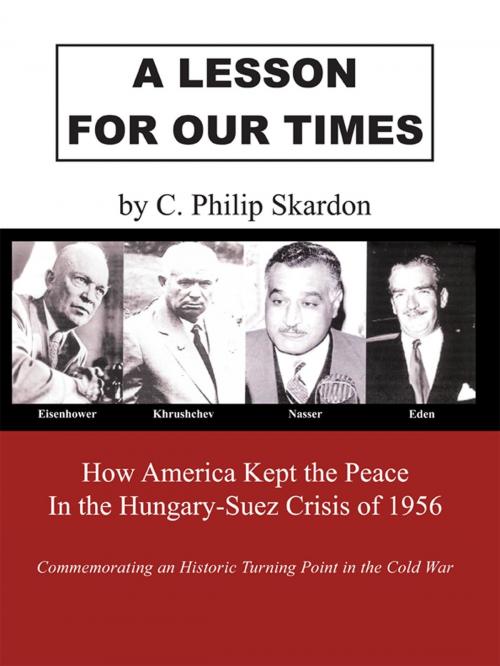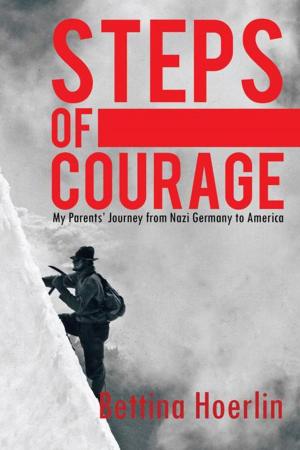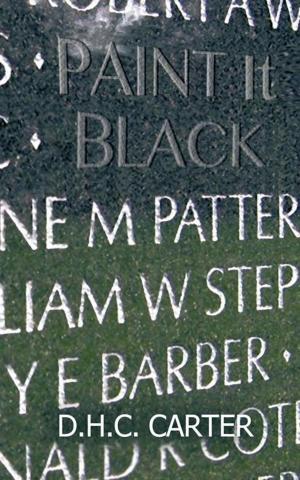A Lesson for Our Times
How America Kept the Peace in the Hungary-Suez Crisis of 1956
Nonfiction, History, Military| Author: | C. Philip Skardon | ISBN: | 9781452030333 |
| Publisher: | AuthorHouse | Publication: | March 19, 2010 |
| Imprint: | AuthorHouse | Language: | English |
| Author: | C. Philip Skardon |
| ISBN: | 9781452030333 |
| Publisher: | AuthorHouse |
| Publication: | March 19, 2010 |
| Imprint: | AuthorHouse |
| Language: | English |
Even though it has faded in the minds of most, the Cold War was the dominant happening in the second half of the 20th Century. The underlying cause was the Soviet Unions expansionism, which was driven by imperialist ambition overlaid with ideology. Combating this radical and highly threatening form of political and territorial aggrandizement made extraordinary demands on the Western nations, and especially the United States because of its strength and democratic tradition. These forces vied in the Hungary-Suez Crisis of 1956 as not before or after, when 200,000 Soviet troops intervened in Hungary to put down the revolution and the attendant Uprising, and, acting contrary to Western interests, Britain and France invaded the Canal Zone and the Israelis the Sinai, raising the crisis to a point of extreme danger as the East-West confrontation nearly burst its bounds. Had the allies not been halted in Egypt by the Eisenhower Administrations use of the UN Charter and UN mechanisms for maintaining peace, and the Russians not deterred from invading Western Europe by threat of U.S. nuclear retaliation, it seemed possible that the world would experience a general war with nuclear weapons as a major component. A Lesson for Our Times focuses on this possibility. While it is about the steps taken by the United States to prevent the worst from occurring immediately, it is also about what was done to prevent a similar crisis from occurring in the future. To say that these actions were unique and effective is true but not enough. They were also unprecedented in the history of the nation, and surely the world, as well as proof that the peace-keeping system devised after World War II would function as intended if undergirded and augmented by U.S. prestige and wherewithal. Here, then, was Hungary-Suez in its totality. More should be known about the crisis for these reasons alone. This book seeks to meet that need while filling a large gap in the understanding of the Cold War. It also recalls a time when Americas conduct as the worlds primary superpower was as clear and visionary as it was purposeful and constructive, in a word, when American diplomacy was at its zenith.
Even though it has faded in the minds of most, the Cold War was the dominant happening in the second half of the 20th Century. The underlying cause was the Soviet Unions expansionism, which was driven by imperialist ambition overlaid with ideology. Combating this radical and highly threatening form of political and territorial aggrandizement made extraordinary demands on the Western nations, and especially the United States because of its strength and democratic tradition. These forces vied in the Hungary-Suez Crisis of 1956 as not before or after, when 200,000 Soviet troops intervened in Hungary to put down the revolution and the attendant Uprising, and, acting contrary to Western interests, Britain and France invaded the Canal Zone and the Israelis the Sinai, raising the crisis to a point of extreme danger as the East-West confrontation nearly burst its bounds. Had the allies not been halted in Egypt by the Eisenhower Administrations use of the UN Charter and UN mechanisms for maintaining peace, and the Russians not deterred from invading Western Europe by threat of U.S. nuclear retaliation, it seemed possible that the world would experience a general war with nuclear weapons as a major component. A Lesson for Our Times focuses on this possibility. While it is about the steps taken by the United States to prevent the worst from occurring immediately, it is also about what was done to prevent a similar crisis from occurring in the future. To say that these actions were unique and effective is true but not enough. They were also unprecedented in the history of the nation, and surely the world, as well as proof that the peace-keeping system devised after World War II would function as intended if undergirded and augmented by U.S. prestige and wherewithal. Here, then, was Hungary-Suez in its totality. More should be known about the crisis for these reasons alone. This book seeks to meet that need while filling a large gap in the understanding of the Cold War. It also recalls a time when Americas conduct as the worlds primary superpower was as clear and visionary as it was purposeful and constructive, in a word, when American diplomacy was at its zenith.















